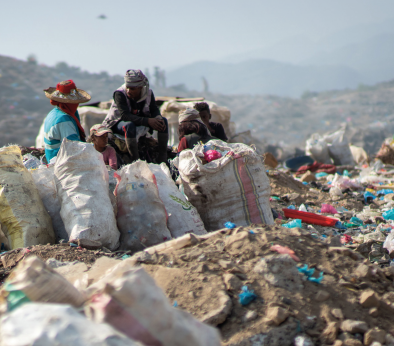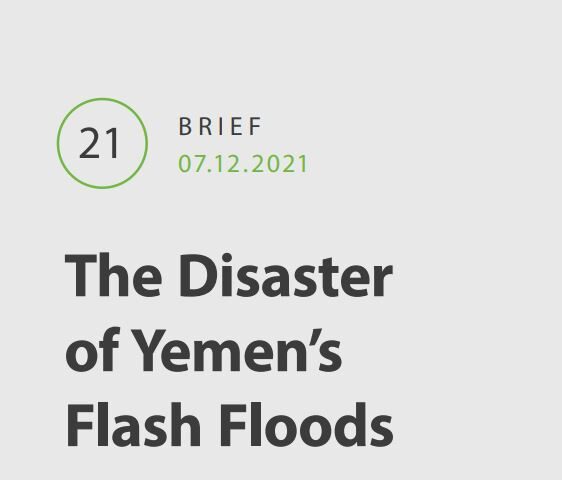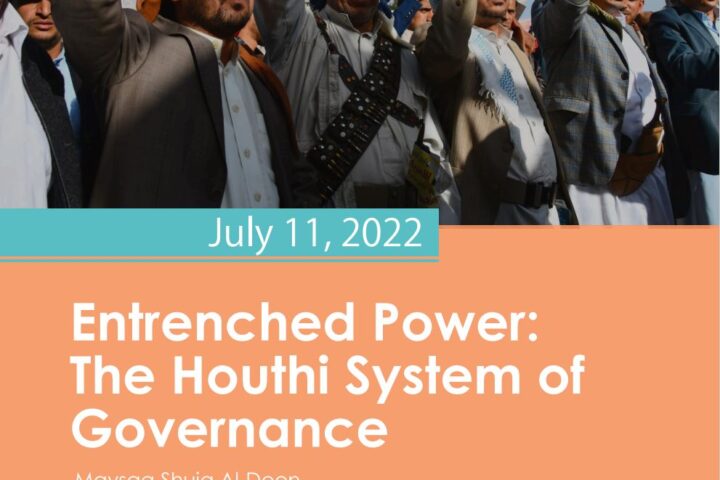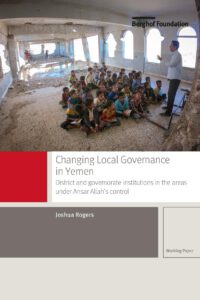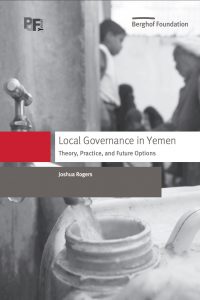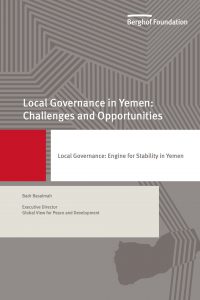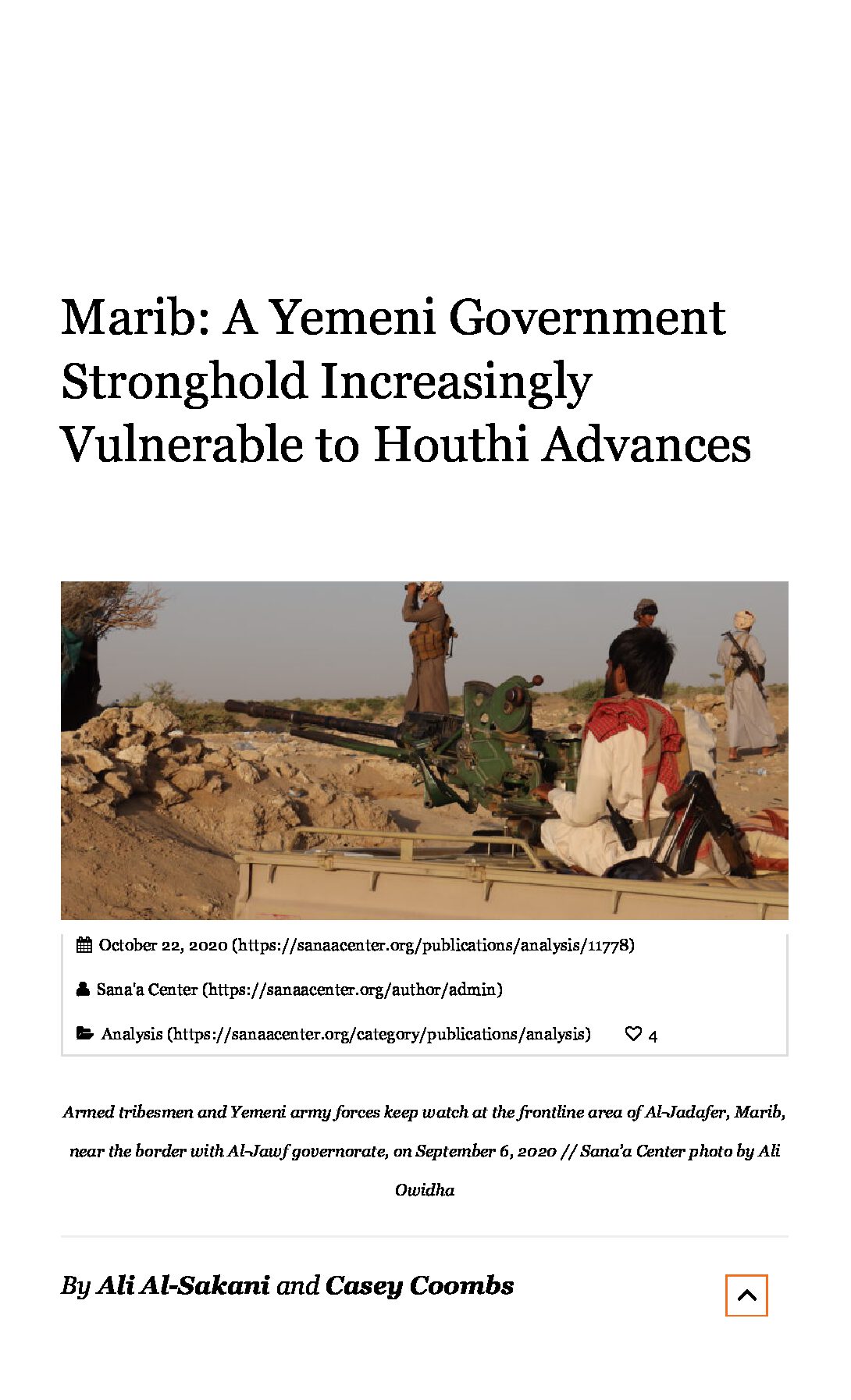
Paper examines the factors that have contributed to Marib’s emergence as a pocket of relative stability since the outbreak of civil war in 2015, details the latest attempts by Houthi fighters to capture the governorate and illustrates what is at stake if a Houthi takeover of Marib comes to pass.
Marib, a centrally-located governorate connecting Al-Bayda, Shabwa, Hadramawt, Al-Jawf and Sana’a, has undergone a drastic transformation since the war started in 2015, emerging as a booming economic, social, political and military center. Natural resources including irrigation from the Marib dam and oil and gas reserves were instrumental in building a bustling metropolis in Marib city over a short period. But it was the autonomy afforded by decentralization under Governor Sultan al-Aradah that harnessed those resources for local development. Obtaining its share of the national gas and oil revenues, for example, has helped fund the improvement of infrastructure, pay civil servants’ salaries and build government institutions. Though hardly insulated from the war, Marib has become a haven for displaced people and the last stronghold of the central government in northern Yemen. Its relative stability and success, however, have been threatened by escalating fighting in the governorate, with Houthi forces relentlessly seeking its takeover since the beginning of 2020.
This paper adds color to the monochromatic narrative that has developed around Marib in recent decades by highlighting its rich history, complex social fabric and important role in the national economy. Against this backdrop, the paper examines the factors that have contributed to Marib’s emergence as a pocket of relative stability since the outbreak of civil war in 2015, details the latest attempts by Houthi fighters to capture the governorate and illustrates what is at stake if a Houthi takeover of Marib comes to pass.
Other resources you may be interested in:
Environmental Pathways for Reconciliation in Yemen
In consultations with more than 2,400 Yemenis across nine governorates, the report explores public perceptions of environmental issues and their influence on peacemaking, as well as public support for potential environmental peacemaking solutions.
The Disaster of Yemen’s Flash Floods: Impact of and Local Responses to the Torrential Rains and Flooding in 2020
Report analysing flooding and the responses by local authorities and international (humanitarian) organisations in seven Yemeni governorates: Hajjah, Aden, Sana’a, Lahij, Hadhrwamawt, and Al Hudaydah.
Entrenched Power: The Houthi System of Governance
Report on the modalities of Houthi governance, focusing particularly at the supervisory system and networks of power at the national level, but with a discussion of governorate supervisory systems and economic networks.


